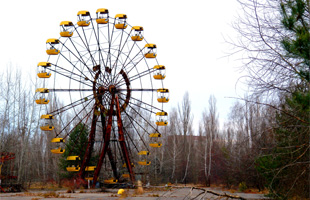Chernobyl: Thirty Years On
On 26 April 2016, the world marked 30 years since the Chernobyl nuclear power plant accident in Ukraine - the disaster that affected millions of people in Belarus, Ukraine and the Russian Federation, and had a substantial impact on the entire humankind by changing the nations attitudes to nuclear safety on a global scale. International radiation safety standards, strategies for improving the nuclear safety, approaches to emergency response procedures and mitigation of consequences were revised after the accident.
Communicating radiation risks in paediatric imaging
April 2016 -- Dialogue with patients and families is particular relevant in the field of paediatric imaging. Accurate and effective radiation risk communication is also necessary between health care providers who request or perform radiological medical procedures in children.
This new document “Communicating radiation risks in paediatric imaging: information to support health care discussions about benefit and risk” is intended to serve as a tool for health care providers to communicate known or potential radiation risks associated with paediatric imaging procedures, to support risk-benefit dialogue in health care settings.
WHO organized a webinar to present the new document on 22 April 2016 in Headquarters Geneva, Switzerland.
Fukushima: Five Years On
March 2016 -- Five years have passed since Japan suffered a triple catastrophe: an earthquake and a tsunami, followed by a nuclear accident at the Fukushima Daiichi Nuclear Power Plant. As the lead UN agency for advice and assistance on public health, WHO shares the concerns of the affected populations in Japan and continues to monitor the health risk situation in Fukushima. Related public health risk assessments and recommendations have been issued by WHO. Today the major challenge remains mitigation of the psychosocial impact of the disaster.
About ionizing radiation
Ionizing radiation has always been a part of the human environment. Along with natural radioactive sources present in the Earth's crust and cosmic radiation, man-made sources also contribute to our continuous exposure to ionizing radiation.
Environmental radioactive pollution has resulted from past nuclear weapons testing, nuclear waste disposal, accidents at nuclear power plants, as well as from transportation, storage, loss, and misuse of radioactive sources. While there are risks associated with exposure to radiation benefits of nuclear applications in medicine industry and science are well established. WHO’s radiation programme aims to assure that the benefits of radiation technology far exceeds any known risks.





